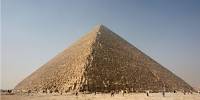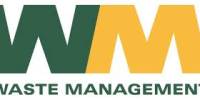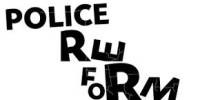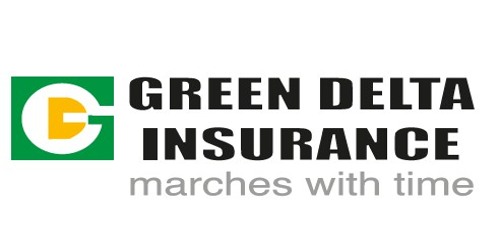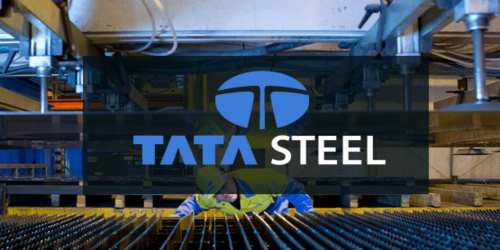1. Traffic Congestion is one of many serious global problems in both developed and undeveloped countries. DhakaCity, the capital of Bangladesh and an area experiencing rapid population expansion and traffic congestion, will be examined in this research design. This research paper will examine the effects that traffic congestion have on DhakaCity. It will illustrate the following objectives:
a. An analysis of the causes behind the traffic congestion problem of DhakaCity,
b. A discussion and critical analysis of the present planning approaches that Bangladesh Government is taking regarding this issue, and
c. A discussion of possible ways to overcome the problem.
2. This research design is a unique and single case study with embedded units of analysis. “Traffic congestion” in Dhaka will be analyzed from the author’s personal experience as a direct and participatory observer. Other sources of evidences will be utilized to support this design, such as books, journals, newspapers and documents. Some relevant cases from cities in Asia are also examined to provide comparison and contrasting data.
3. DhakaCity was established on the bank of the river Buriganga and at that period a river-based economy controlled the city dwellers. From that time, the city grew only at one side of the river, mostly towards north. After the independence of Pakistan, DhakaCity was declared as the provincial capital of East Pakistan. The river was dying gradually while the land communication from Dhaka to the other parts of the country was improving. Dhaka city exploited the following factors and used them to their advantage: Dhaka’s historical background, fine climatic condition, advantages of being a capital city, better quality of life comparing to other cities, better job opportunities and skilled man power. Especially after the independence of Bangladesh, the growth of this city never went down. Although DhakaCity’s area is less than one percent of the country’s total land area, it supports about 7.2 percent of the total population of the country.
4. The intolerable traffic congestion of DhakaCity has become an everyday certainty and a nightmare for the city dwellers. It can be easily concluded that Dhaka has marched into the 21st century as an over-populated, over-congested and over-polluted city. Years of negligence, mismanagement, improper planning and political instability have led Dhaka to this present predicament.
Either it is in New York City or Bombay or Dhaka, traffic congestion always poses negative externality upon the society. It poses severe threat to the economy as well as to the environment. In 1997, the annual country wise Economic Wastage occasioned by Traffic Congestion was $75 million. Since DhakaCity has large share of the total vehicles of the whole country, we can say that most of this congestion occurred in Dhaka. And now, in the year of 2000, the wastage will be definitely higher; because the vehicles of this city, not the roads, are increasing significantly each year.
5. Bangladesh is one of the top ten poorest countries of the world. The capital city Dhaka can not afford the economic and environmental loss resulted from this severe Traffic Congestion.
6. DhakaCity has several types of vehicles. Income-wise the use of different transports is as follows:
a. Higher Income Group: Car, Taxi Service, Micro Bus and other private vehicles.
b. Middle Income Group: Rickshaw, Auto Rickshaw, Bicycle, Motor Cycle, Carriage, Car, Bus, Minibus
c. Lower Income Group: Bus and Tempo
d. Goods Delivery: Truck, Pick up, Van, Human Driven Van
7. The trip distribution of DhakaCity is very much different from the other similar cities of Asia. Almost 66% of the total trip distribution is on foot, 11% is on Rickshaw and the rest 23% is others.

TRANSPORTATION OF DHAKA CITY
| Public Sector | Private Sector | Informal Sector |
| Bus service managed and operated by Bangladesh Road Transport Corporation. Other institutions having fleet of buses include; Public sector office and semi-government institutions. | Medium and small sized Mini buses and coasters operated mainly by small sized operations or individual owner-managed companies. | Mainly cycle rickshaws operated by individual owners up to a fleet of 100 or more rickshaws. Most rickshaws are rented out to drivers for eight-hour shift. |
8. In 1998, rickshaws were the 38% of the total vehicles of the whole city. In 1999, there are 79619 Licensed Rickshaws in Dhaka. Till March 2000, this number has increased up to 88000. At present Dhaka has about 350,000 rickshaws, most of which are unauthorized.
REGISTERED IN BANGLEDASH (PER YEAR)
| Year | PrivateCar | Motor Cycle | Bus | Taxi | Truck |
| 1992 | 1335 | 4125 | 123 | 00 | 182 |
| 1993 | 2186 | 3453 | 91 | 01 | 160 |
| 1994 | 3312 | 3189 | 225 | 00 | 509 |
| 1995 | 6923 | 4427 | 145 | 25 | 802 |
| 1996 | 8386 | 4027 | 73 | 35 | 615 |
| 1997 | 6528 | 5346 | 58 | 14 | 834 |
| 1998 | 4984 | 4992 | 184 | 102 | 1681 |
| 1999 | 7893 | 6991 | 394 | 203 | 2364 |
The number of public transports, especially the buses, is very low comparing to rickshaws or other vehicles.
CAUSES OF CONGESTION
9. It is very hard to tell about the causes of congestion in Dhaka as it does not follow any pattern. It is a common practice in Dhaka to blame rickshaws as the only reason for creating traffic congestion. But in reality there are several of reasons behind this problem. Effective reasons include:
a. Significant increase in population and also all types of vehicles
b. Simultaneous presence of motorized and non-motorized vehicles on the same street
c. Traffic mismanagement: Violation of Traffic rules and regulations
d. Poor transportation and infrastructure planning
e. Other Issues
Significant increase in population and also in all types of vehicles
10. All of the major export oriented Industries, corporate offices, significant number of Export Promotion Zones, the head offices of almost all Multi National Companies, higher educational facilities and even the major InternationalAirport of the country, all are located in or around the greater Dhaka city. Thus the city controls the economic development of the whole country. For these reasons, most of the rural-urban migration of Bangladesh is towards DhakaCity and it constitutes about 60% of Dhaka’s increasing population. Dhaka, at present, is one of the top most populous cities of the world. At present the greater Dhaka has about 10 million population. The city’s urbanization rate is one of the highest of the world and it is projected that by the year 2010, Dhaka will be the sixth largest city of the world with 18 million population.
11. The increasing population obviously increases the demand for more vehicles on the streets. Also they can easily provide the necessary labor force, especially for the informal sector [rickshaw pulling]. The more the traffic, the more will be the congestion, as the city has very limited infrastructure.
Simultaneous presence of motorized and non-motorized vehicles on the same street
12. In Dhaka City, both motorized and non-motorized vehicles occupy the same streets at the same time. Their speed is different and that is why it creates chaos and congestion on the street. Most of the rickshaw “pullers,” or drivers, do not have any training and they are not even aware of the traffic rules.
13. Rickshaws have some positive points also. They are environment friendly vehicles. Some transport researchers of the western world are recently talking about Eco-friendly transportation trends. There are some cities like Paris, which have introduced rickshaws on their streets in the recent years because of its environment friendliness quality.
14. Another positive point is, rickshaw is economically very suitable for the middle income people, who can not afford to buy a car and also do not want to take a ride in a heavily congested bus. There is also a privacy factor. Bangladesh is a Muslim country and Muslim women usually prefer privacy. Rickshaw can give them this privacy along with the economic affordability.
Traffic Mismanagement
15. Insufficient number of traffic police and traffic signals, flaws in traffic markings, violation of traffic rules and regulations etc can also be cited as some of the main reasons for traffic congestion in this city. Some points are discussed here: Violation of Traffic rules and regulations
a. There is a lack of education and consciousness among the citizenry about the traffic rules.
b. People who come to the city from villages for employment, rickshaw pulling becomes the most easily available job for them. They do not need any formal training to start this profession. In most of the cases, they do not even take a legal license.
c. Most of the time, the pedestrians crosses the busy streets even if there is no crosswalk. People do not usually use the over bridges or underpasses, which are constructed in the important and busy intersections of the city.
d. The buses do not stop at the bus stops, they stop just at the intersection points, and rickshaws always follow them. As a result, the intersections of the busy roads always remain crowded by the people and different types of vehicles.
Improper Implementation of Traffic Rules
16. People usually do not want to follow the traffic rules, as there is no proper implementation of these rules. Even though traffic police is usually present at every nodes or intersections, they do not do their duties properly. Traffic rules are also very flexible. One can easily avoid the fine by giving bribe to the police.
17. The deployment of Military Police on Dhaka’s road shows that if traffic rules are properly enforced, people must obey it. We had this experience experimentally more than three or four times in the recent years.
Encroachment of roads and sidewalks
18. Street vendors, Hawkers and street front shop owners occupy above 60% of the 163-km footpaths of DhakaCity. The sidewalks are also filled up by construction materials, garbage or even temporary houses of homeless people or beggars. Very often pedestrians are forced to walk on the main roads instead of using the sidewalks because of these reasons.
Poor Transportation and Infrastructure Planning
19. Unplanned Growth of the City: DhakaCity had its first Master Plan when it was a province of Pakistan in 1959. But besides 3 or 4 exceptions, nothing was implemented from that master plan because of the political instability. Later after the independence, there were couples of Structure Plans, 2 year to 5-year plans. But it is a very common incident that people and also the authority do not follow those plans always. New developments are always taking place in DhakaCity without any coherent road system. More than 3000 big and small shopping centers have mushroomed on the main roads from the last 8/10 years.
20. Lack of minimum required road structure and disproportionate road width comparing to the traffic loadDhaka City has very inadequate road networks, which are only 8 or 10 percent of the total city area, whereas the acceptable ratio is 25 percent. Greater Dhaka has a total road network of approximately 2230km of which 25% are primary roads. The width of the roads varies from 6 to 40 m. The main roads are 15 to 25 m wide, newly built roads are 40 m wide while the roads in the older part of Dhaka are less than 6 m wide.
21. Dhaka Metropolitan Development Plan (DMDP) has shown that the road hierarchy of DhakaCity is incomplete and in some major developed areas there is no road hierarchy. Old Dhaka and some other places of the city have major access problems and it will likely worsen as development intensifies.
Improper and inadequate Public Transport System
22. One of the main problems of DhakaCity is its very limited Public Transport System. Bangladesh Road Transport Corporation [BRTC] is no more subsidized as it became private in 1993. Now, 90% of this corporation is in private sector and 10% in government sector. Before being privatized, the yearly loss of BRTC in the year 1991, ’92 and ’93, was almost Tk100000 – 200000 [US$ 1960 – 3920]. Now, in private sector the yearly turnover is Tk50000000 [US$ 980392].
There are three private companies, which are doing Transport (bus) business.
Metro Service – 115, Nirapod – 20, Nitol Motors – 2
23. They are doing profits, but there is no data on the amount of profit. There are now 1500 private buses (including BRTC bus) in Dhaka. But we need more than 4000 buses. BRTC wants to increase its no of buses, but neither the government nor the private companies are interested and come to invest in this sector.
The presence of Road and Rail Line on the same ground level
24. The existing “intercity rail line” passes through the four important Central Business Districts and a number of important and busy roads of DhakaCity. When a train passes, lots of vehicles have to wait near the rail crossing, which causes serious traffic congestion at the interval of every 15 minutes as an average.
Inadequate Parking Facilities
25. Most of the new shopping centers or commercial buildings do not have adequate parking facilities. People have to park on the roads, which ultimately narrow down the effective width of the roads to a great extent.
26. Before the approval, many building projects show that they will provide parking facility in the basement. But after getting the authorization to construct a project, the builders or owners usually do not follow the proposed plan properly.
Other Causes
27. Political reasons: Everyday at least one or two street processions or protests occur in Dhaka because of the all-time political instability of Bangladesh. These processions slow down the traffic flow of the important streets during the peak hour.
28. Lack of manpower: As it was said before, the people of DhakaCity usually do not follow the traffic rules if there is no police on the roads. The existing number of policemen of DhakaCity is only 1561 [1999 data]. If we compare this data with that of Delhi, which has almost the same volume of population, we will see that Delhi has more efficient force with 12000 policemen.
WHERE IS THE CONGESTION?
29. Some hot spots of DhakaCity have been identified, where most of the traffic congestion occurs. Some of these spots are:
a. Intersection of the busy roads
30. About 20 congested intersections of DhakaCity are responsible for the 75% of the total vehicle delays [1997 data].
a. Near the Inter city Bus Terminals
b. Intersection of Roads and Rail Lines.
c. In some busy shopping and commercial strips
WHAT SHOULD WE DO NOW?
31. Although the problem of traffic congestion is universal, its solution is highly geocentric. What is applicable or what should be applicable in Europe or USA, might not be applicable in every country of Asia. As for Bangladesh, we can not also take some remedies like USA or Europe because of our technical or technological deficiency.
32. Bangladesh Government is trying to prepare some strategic plans and policies to improve the transportation system of DhakaCity, mostly to meet the future travel demand and to reduce the severe traffic congestion of present time.
QUESTIONS THAT MAY ARISE
33. Whereas many modern cities of the world are now thinking about environment friendly vehicles, will we remove rickshaws from our streets or will we improve them?
34. What are the Govt. plans and who are preparing it? Are these new plans really can help improving the situation? What will be the funding source? This paper will try to give some recommendations regarding reducing the traffic congestion.
#1: Policy Recommendation
35. DhakaCity has very limited infrastructure. It can not support the existing people and vehicles on its roads. People of DhakaCity are facing Electricity shortage, Gas shortage and also Water shortage. If the most of the roads can not carry the traffic load now, what will happen after five years?
36. Obviously the supply side remedies will come first. We have to increase the number of buses or improve the mass transport system if we want to attract the middle class people to move by bus. We have to increase the number of roads, the width of roads.
Supply Side Remedies
37. The Integrated Transport Network Plan for Metro Dhaka (1995-2015) has proposed some supply side remedies to overcome the traffic congestion of DhakaCity.
Road
38.
a. Expansion and upgradation of public transport services, especially high capacity buses
b. Construction of 217 km of Roads
c. Construction of 25.8km of Link Roads to provide corridors to ease the intracity traffic movement.
d. 25km of existing road widening program
e. Construction of OverBridges and Under Passes for easy pedestrian movement
f. Construction of eight flyovers over the most serious congested nodes or intersections
Rail
39. We have a long rail network throughout the DhakaCity. We have to use this line not only for long distance travel but also for inner city movements. Dhaka Integrated Transport Study (DITS) is thinking about the following issues:
a. Upgradation of the Narayanganj-Kamlapur existing rail line: It can attract as many as 55000 potential passengers and thus reduce the load from the Narayanganj-Dhaka Bus Route and also from severely congested Gulistan Bus Station.
b. Subway development program
c. Development of an electrified commuter line extending to Tongi.
40. They can take more remedies such as
a. Increasing the number of high capacity public transports such as double decker [2 levels] buses
b. Construction of by-pass roads for trucks and long route buses
c. Construction of Parking Garages in the CBDs and near the busy shopping areas like Elephant Road, Hatirpool, etc
d. Standardization of existing traffic management system
Demand Side Remedies
a. More implementation of one-way traffic law
b. Time segregation for different types of vehicles
41. At present we have time segregation of vehicles only to a certain extent. For example, the load carrying Trucks are not allowed on the streets of Dhaka during daytime. They have to wait near the entry points of the city up to 6pm everyday. This has also a negative impact. Those entry points become very congested everyday from 5pm to 7pm.
42. We can do some experiments in terms of time segregation of different vehicles. Usually the roads are relatively less congested in the afternoons. We can allow rickshaws to some V.I.P roads [it will be explained in the next topic] at this time say from 3pm to 5pm. We can also allow rickshaws on these roads early in the morning [from 5am to 6:30am] and late nights [after 11pm].
a. Pricing on road parking in the heavily congested roads
43. Even in neighboring CalcuttaCity, there are steep fines for vehicles that are parked at the side of the busy roads. We have to start this system immediately.
a. Declaration of busy shopping streets such as Elephant Road and Gausia as ‘pedestrian’ streets for certain time periods of the day.
b. Separation of motor vehicle bays and rickshaw bays in the busier oads, especially near the intersections
What should we do about the rickshaws?
The Integrated Transport Network Plan did not tell anything especial about the rickshaws. What should we do about the rickshaws? Should we demolish them? Should we remove them from the roads?
Dealing with rickshaws is the most critical issues. It is at a time a political, social, economical problem. Rickshaw pulling is a huge informal sector labor market. It is not possible to remove rickshaws from the streets of Dhaka, we have to accept it. We can demolish the unauthorized rickshaws. But it is also very difficult to do that, as our authority is not honest enough to do this work properly.
44. During the 80’s, an effort started to remove rickshaws from some of the very important roads of the city. At that time, an autocrat ruler was in charge of the Government. So, there was no protest against it and it worked out successfully. But later we saw that although those roads did not have any rickshaws [they are called V.I.P. roads], still they faced lots of traffic congestion. This incident proves that rickshaw is not the main cause of congestion. But it is also true that motorized and non-motorized vehicles can not go side by side on the same road.
45. We can remove the rickshaws from the main roads, where speed is a very important thing to consider. Rickshaws can be present on the Arterial roads or Collector roads. There may be some streets where only rickshaws will be allowed, not the cars or buses. There might be some streets where both rickshaws and cars will ride, but in that case, we have to segregate two lanes for two types of vehicles. This strategy has been proved effective in some previous experiments for shorter periods.
46. In the USA, average people can easily afford a car but most of the people of Dhaka can not. So, rickshaw will be a very important vehicle in future also for the persons who want privacy and do not want to ride public buses. If the public bus and metro rail can provide efficient services, people will gradually be attracted to them. The people of DhakaCity are used to ride by rickshaws for the whole of their life. So, it will also be very tough to change the behavior pattern within a short period of time.
47. Removing rickshaws will also have a negative impact on our environment. If rickshaws are removed, we will have to provide enough buses, taxis, auto rickshaws [which use 2 stroke engines] and it will definitely worsen the situation in terms of environmental aspects, as all of the motorized vehicles of Bangladesh still use leaded fuel.
48. Another major concern is the economic side of rickshaw pulling. We have to think about the numerous numbers of people who are engaged in this profession for so many years. We have to provide them alternative employment opportunity if we want to remove rickshaws from Dhaka’s streets. It will also be a serious political decision, because these rickshaw pullers form an important percentage of the voters in the political elections and they also maintain a strong political body themselves.
#2: Alternative Design
Thinking Vertically
49. It is very tough to build new roads or to expand the width of the existing roads, as the city is too much congested. At this moment if we think about the supply of new roads or to improve them, we probably have to think to go vertically. We can build highways and over bridges to face the land constraint problem.
Changing the location of the existing Railway Station
50. As it is described earlier that the existing rail line makes a great impact on traffic congestion. We can change the location of Kamlapur Railway Station from Kamlapur to somewhere near the ZiaInternationalAirport. If we can do this, we can avoid the traffic congestion it creates every day at the interval of every 10/ 15 minutes.
Choosing the right route for Subway
51. We have to think that building Subway is not the ultimate solution. In many developed cities [ex-New York City] or undeveloped cities [ex-CalcuttaCity] have subway system, but they also have severe traffic congestion problem. Still, a subway can attract many people of DhakaCity to use the public transport. The most important or crucial thing is to decide a suitable route for Subway. A proposal can be provided for the Subway route.
52. If we can shift the Dhaka Railway Station from Kamlapur to somewhere near Uttara, we can combine the above two design strategies and make an effective plan. The map shows that the existing rail line passes through or near the main four CBDs of Dhaka City: Motijheel, Kawran Bazar, Mohakhali and Uttara. It could be the most appropriate Subway route also. As we have already got the land [under the Railway Authority], we will not need to acquire any new land or demolish any legal structure. We can build the subway track under the ground and can use the ground level as a main road or a highway, which will be solely for the motorized vehicles. It will work as a parallel road to the Kazi Nazrul Islam Road [OldAirport road] and can share the traffic load.
53. One very important question may arise about the Subway. Is it feasible both economically and technically to build a Subway system in Dhaka? Although Bangladesh Government will hopefully receive both types of help from different countries, we have to think about the future impact of the loan we will take from the other countries. Which one will be more feasible? A underground rail track or an elevated rail track? We have to do an in-depth feasibility study about this issue.
#3: Other Policies
54. We have to do something about our existing land use pattern. For example, Mirpur Road is one of the most important and the longest roads of Dhaka. Earlier, even before 2/3 years, there were mainly residential developments on the both sides of this road. Recently it has been declared as a commercial street. Lots of shops and other commercial activities are constructed now on the both sides of it, which creates severe traffic congestion almost all the time. Similarly other residential areas of the city are transferring partially to commercial areas, such as Dhanmondi and Banani. These sudden or gradual changes in the existing land use create congestion and thus suffer the residents of those areas. We also have to have strict zoning laws so that the developers can not build high rise apartments [12 to 20 floors] in front of the 20 feet wide road.
55. We have to ensure using the full width of the roads and the sidewalks by removing the street vendors and rehabilitating them. Our road and transport authorities rarely work comprehensively. It is very important to do some institutional strengthening between them. Otherwise, it will be very difficult to do some positive changes.
56. The most important thing is to educate people and the children about the traffic rules and the negative aspects of disobeying those rules. We have to ensure the proper implementation of these rules, otherwise nothing will bring changes no matter what policies we take now or in future.
CONCLUSION
57. The US$284 million Dhaka Urban Transport Project [DUTP] aims at reducing the congestion of Dhaka, improving the public transport system and strengthening policy and regulatory framework. The International Development Agency is providing US$117 million for the DUTP while the Government will finance the rest. Under this project the Dhaka City Corporation and BRTA are working together to prepare a long term Urban Transport Plan that would be able to cope with future growth of the city, improve road safety, reduce congestion as well as protect the environment.
58. At this stage we also have to think about some alternative growth trends. No more DhakaCity can bear the load of its population and provide them the service even what it is giving now. A decentralized growth of this city is highly recommended to avoid the possible economic decline.
59. We have to find out the real reasons why people from all around the country are migrating mainly towards DhakaCity. The rural and regional economy should be made stronger and active enough to provide landless and jobless people some job opportunities. We have to establish a proper balance between the rural and urban economy. Measures should be taken not to stop migration, but to keep it within a manageable level to properly provide for the destitute, who form the majority of the migrants and the informal labor force. And steps should be taken to establish new regional growth centers like EPZs and Industrial Parks surrounding DhakaCity, which will work as nuclei. All the economic activities of the country are centralized mainly on DhakaCity; it should be decentralized to the other Divisional Cities like Chittagong, Khulna, Sylhet, Rajshahi and Barisal.
60. In this way we can reduce both the human and traffic loads from the roads of Dhaka City and can reduce the air pollution, noise pollution and also make the people feel proud of this city, a megacity of the new millennium.

